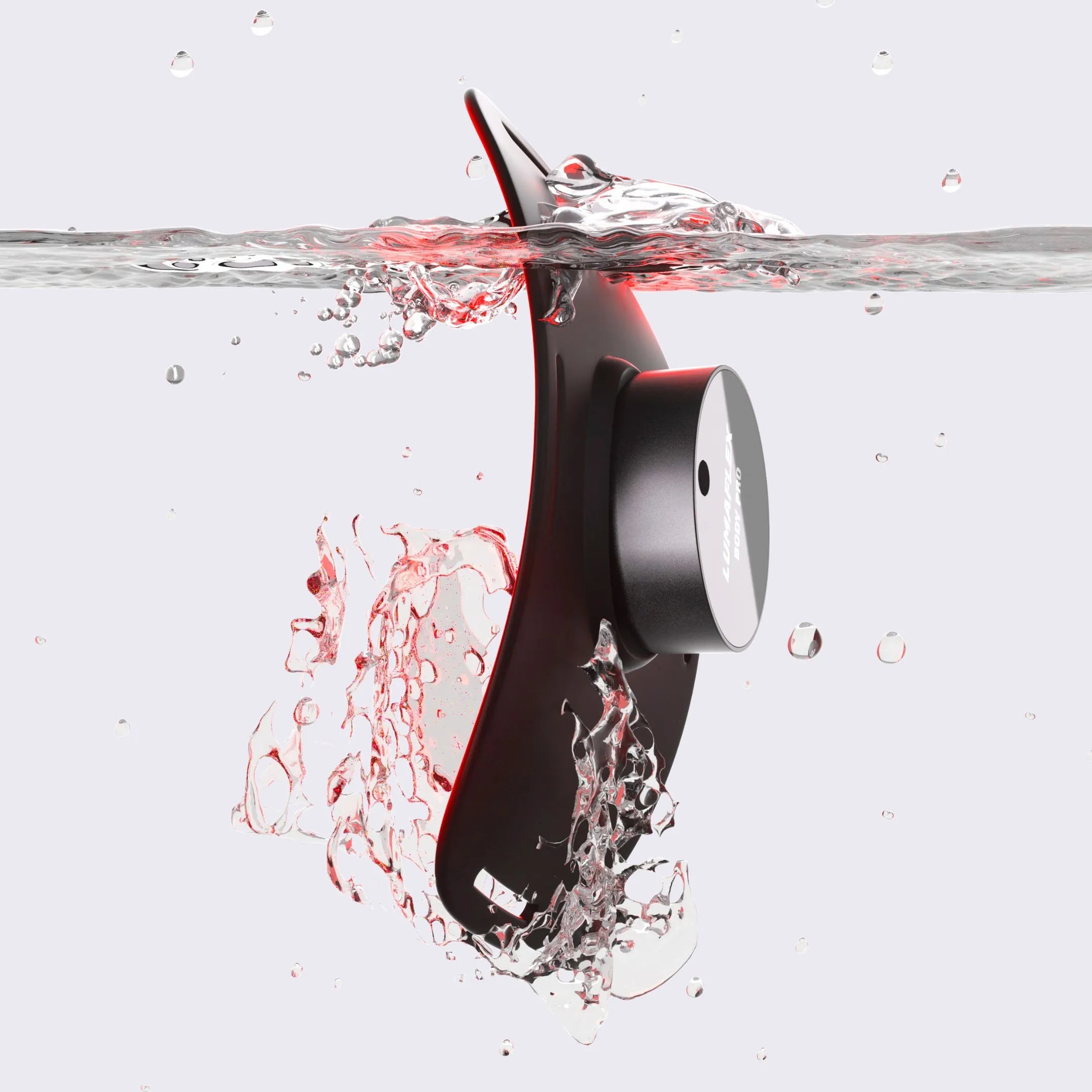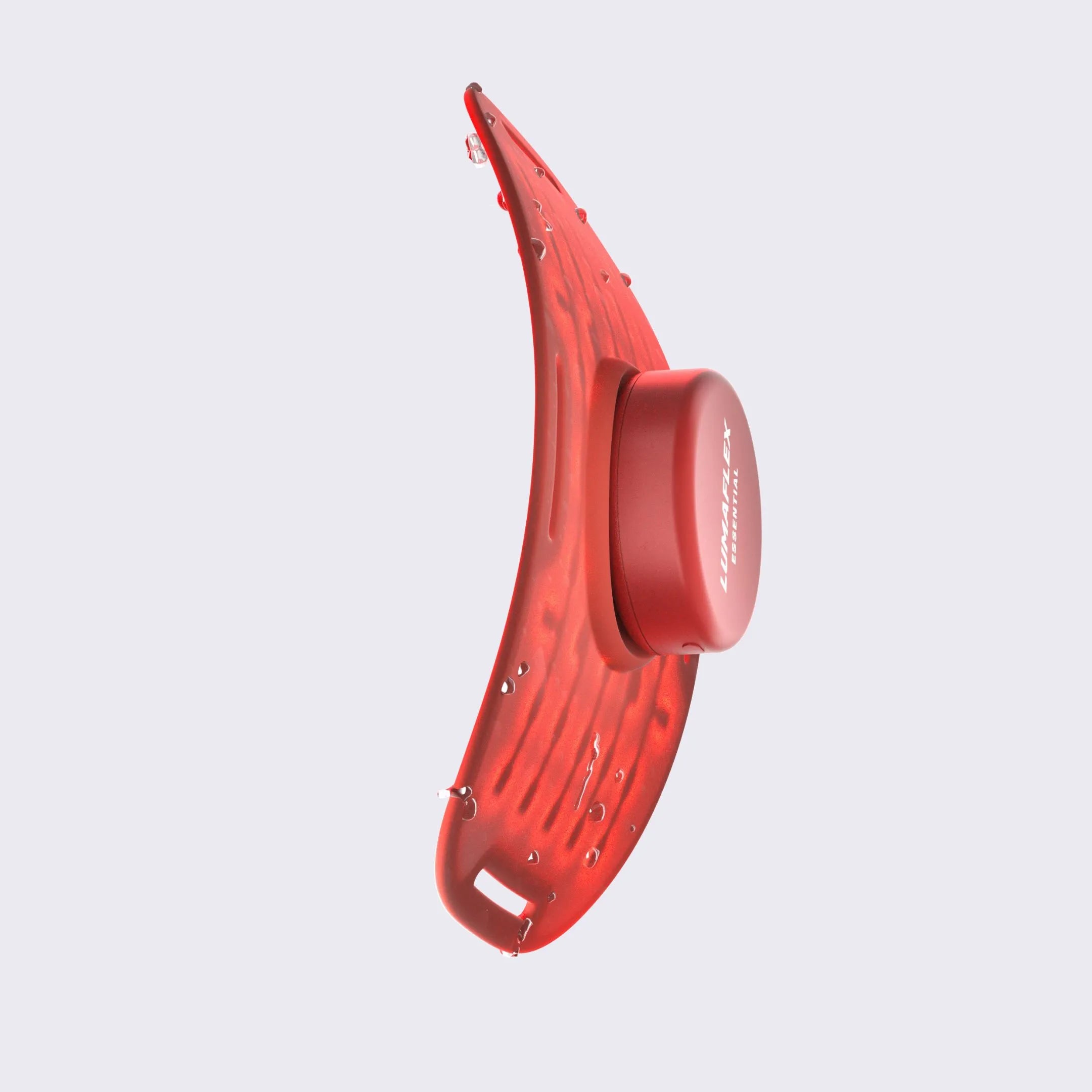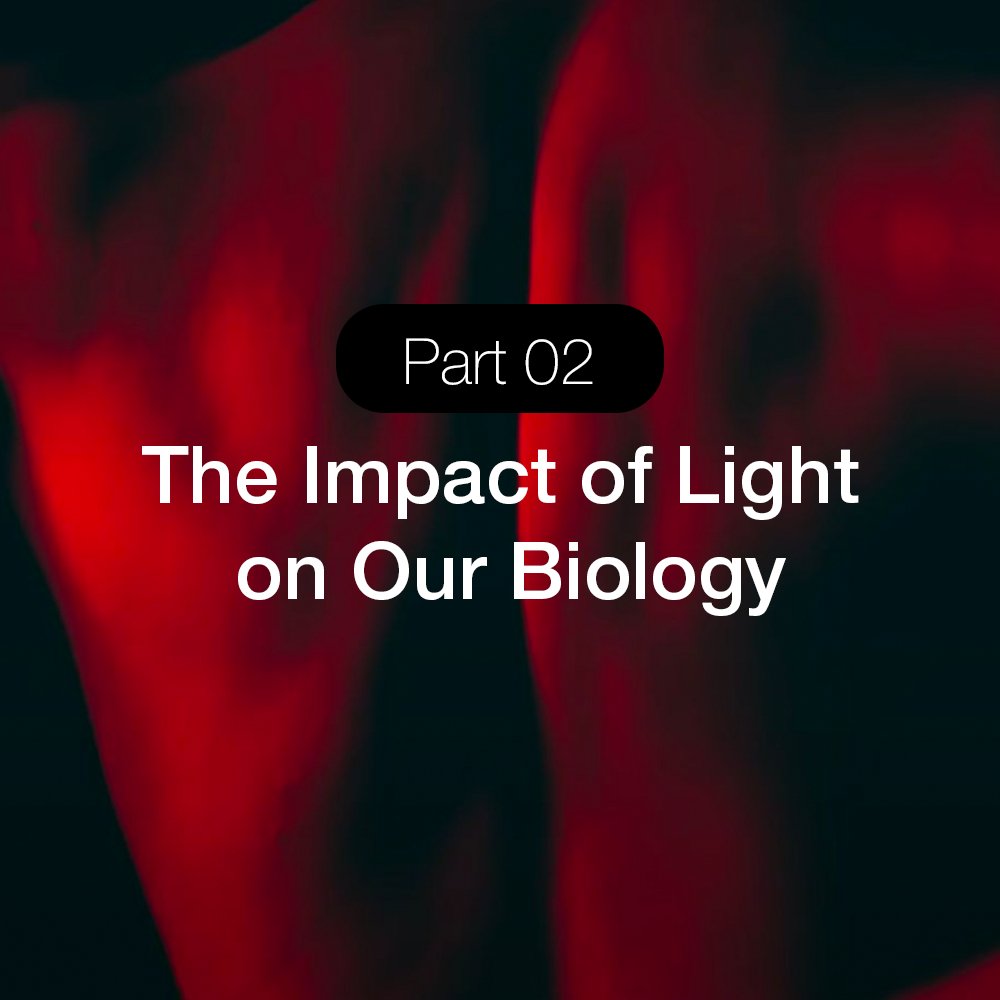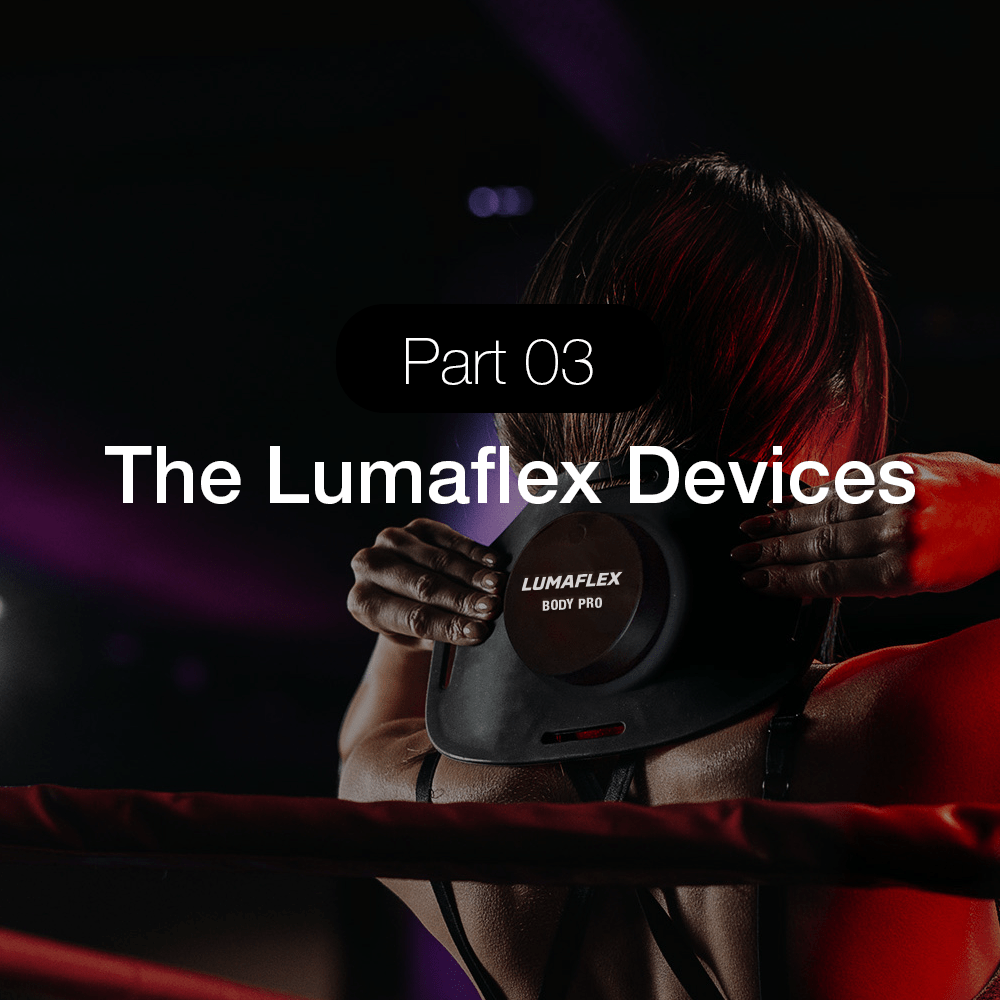Break Free from Sleepless Nights: Red Light Therapy for Sleep
The Sleep Crisis: Time for a Natural Solution
Red Light Therapy for Sleep: Sleep should be simple, a quiet end to the day, a time to recharge. However, for millions of Americans, it has become something elusive. More than 70 million people struggle with sleep disorders, from the tossing and turning of insomnia to the heavy interruptions of sleep apnea. Night after night, they lie awake, and morning after morning, they wake up drained.
And the cost of all this lost sleep? It's more than just fatigue. Sleep deprivation now costs the U.S. economy an estimated $411 billion each year in lost productivity and rising healthcare expenses.
The effects on our health are just as serious. Poor sleep doesn’t just make us feel tired. It weakens our immune system, raises the risk of heart disease and diabetes, and takes a toll on our mental and emotional well-being. It clouds our thinking, makes stress harder to handle, and strains our relationships.
But what if there were a natural way to reclaim the rest your body needs? Red light therapy is gaining attention as a gentle, non-invasive method for improving sleep quality. By supporting your body’s natural circadian rhythm and calming the nervous system, this red light therapy insomnia treatment offers a drug-free path to deeper, more restorative rest.
Because a good night’s sleep is about more than just feeling rested. It’s the foundation for clearer thinking, stronger health, and a better quality of life. If you've been searching for a more natural path to restful nights, you might find what you’re looking for just ahead.
Table of Content
The Hidden Costs of Poor Sleep: Health Problems Caused by Sleep Deprivation
Physical Health Consequences
The effects of poor sleep run deep, far beyond just feeling tired. When restful sleep becomes rare, the body begins to break down in quiet but significant ways. The immune system, for one, starts to falter, leaving you more susceptible to frequent colds, lingering infections, and slower recovery times.
Sleep also plays a vital role in regulating metabolism. Without it, your body struggles to process energy efficiently, often leading to weight gain and a higher risk of developing conditions like type 2 diabetes. Over time, the heart pays a price too. Chronic sleep deprivation is closely linked to high blood pressure and heart disease, two major risk factors for stroke.
In addition, sleep loss drives up inflammation, worsening chronic pain and conditions such as arthritis. And because deep sleep is when the body repairs itself at a cellular level, long-term deprivation can accelerate the aging process, leaving you more vulnerable to stress and slower to heal.
When sleep suffers, your body sends clear signals. You may notice:
More frequent illness
Unexplained weight changes
Persistent fatigue or muscle soreness
In short, sleep isn’t just rest. It’s repair, protection, and prevention. When it’s compromised, so is your overall health.
Mental and Emotional Impact
The toll of poor sleep isn’t confined to the body. It reaches deep into the mind, disrupting emotional balance and mental clarity. Without enough rest, the brain struggles to regulate mood, making anxiety and depression more likely to take hold. Over time, cognitive functions begin to slip. Memory fades, focus wavers, and even simple decisions can feel overwhelming.
As mental clarity diminishes, so does productivity. Emotional stability can weaken, leading to irritability, mood swings, and increased tension in relationships. Social withdrawal often follows, creating a sense of isolation that only deepens the emotional strain.
The effects are wide-reaching:
Increased anxiety and depressive symptoms
Difficulty concentrating or remembering
Strained personal and professional relationships
This creates a cycle that’s hard to break—poor sleep worsens mental health, and poor mental health makes sleep even harder to find. But there is a way forward.
By restoring healthy sleep patterns, you can begin to untangle that cycle. Red light therapy provides a natural, non-invasive path to better rest, helping to calm the nervous system and support emotional resilience, so you can feel more like yourself again.

The Science of Better Sleep: How Red Light Therapy for Sleep Works
Red Light Therapy for Sleep and Circadian Rhythm Optimization
Our bodies are naturally wired to follow a rhythm, waking with the sun and winding down with its setting. But in the modern world, artificial light often overrides that rhythm. The glow from screens, overhead lights, and digital devices tricks our brain into thinking it’s still daytime, keeping us alert when we should be preparing for rest. This disruption plays a major role in sleep difficulties for many people.
That’s where red light therapy for sleep disorders, especially red light therapy, proves to be a powerful ally. Unlike blue or white light, which can delay melatonin production, red light works in harmony with the body’s natural processes. It supports melatonin release, helping signal to the brain that it’s time to sleep, gently nudging your internal clock back into balance.
As Dr. Andrew Huberman, Ph.D., neuroscientist and professor at Stanford University, explains:
"Red light in the 630 to 850 nanometer range has been shown to improve mitochondrial function and can help with circadian rhythm regulation when used at appropriate times. The key is that red light doesn't activate the melanopsin cells in your retina that signal daytime to your brain, making it ideal for evening use without disrupting sleep onset."
When used consistently, red light therapy offers measurable benefits:
Supports natural melatonin production
Helps reset disrupted sleep cycles
Improves mitochondrial function for better cellular health
Clinical research backs this up. Recent studies have demonstrated the potential of red light therapy for sleep quality across various populations. Red light therapy, in particular, has shown promising results.
A study on older adults found that visual red-light stimulation enhanced sleep quality, as evidenced by increased delta wave activity during nighttime (K. E. & K. R, 2023). Similarly, research on Chinese female basketball players revealed that red light irradiation improved sleep quality, serum melatonin levels, and endurance performance (Jiexiu Zhao et al., 2012).
A meta-analysis confirmed that phototherapy significantly improved short-term sleep quality compared to placebo and was particularly effective for patients with depression and sleep disorders (Zhen Chen & Wenqiang Wu, 2024).
Another study on elderly individuals demonstrated that light therapy (10,000 Lux) administered for 30 minutes each morning over a month significantly improved overall sleep quality, with notable improvements in daytime dysfunction and sleep latency (Imatullah Akyar & N. Akdemir, 2013).
By restoring your body’s natural rhythm, red light therapy does more than help you sleep. It helps you return to a state of balance.
Red Light Therapy for Sleep and Cellular Recovery and Restoration
Red light therapy does more than help you fall asleep. It actively supports your body’s ability to heal and recover. Through a process called photobiomodulation, red light penetrates the skin and stimulates the mitochondria, the energy producers inside your cells. This stimulation increases cellular energy, empowering your body to repair itself more effectively during sleep.
By directly reducing inflammation, red light therapy also relieves muscle tension and physical discomfort that often stand in the way of restful sleep. With less pain and more relaxation, your body can shift into deeper, more restorative sleep cycles.
Here’s how red light therapy works to enhance recovery:
Boosts mitochondrial function to accelerate cellular repair
Lowers inflammation to ease discomfort and promote relaxation
Supports deeper sleep by improving physical recovery overnight
When you use red light therapy consistently, you give your body the tools it needs to recharge fully. It helps you wake up not just rested, but truly restored.
Red Light Therapy for Sleep: Your Complete Protocol
A consistent nighttime routine helps train your body to expect rest, and red light therapy makes that routine more effective. By using red light intentionally, you can support melatonin production, calm your nervous system, and ease into deeper sleep. Follow this clear, active protocol to get the most from your sessions.
Red Light Therapy for Sleep: Evening Preparation Routine
Begin 30–60 Minutes Before Bed
Start your routine at least half an hour before sleep. Use this time to disconnect from stimulation and prepare your body to wind down.Apply Red Light Therapy for 10–20 Minutes
Use your device within this time range to trigger melatonin production and promote sleep readiness, without overstimulating your system.Position the Light for Maximum Effect
Sit or lie down comfortably. Place the device 6–12 inches from your face or directly over your body, and angle it about 45 degrees to target key areas effectively.Build a Reliable Pre-Sleep Ritual
Pair your red light session with relaxing habits: dim the lights, shut off screens, stretch lightly, or play soft music. Repeat this routine nightly to train your brain to recognize sleep signals.
Red Light Therapy for Sleep: Morning Optimization Protocol
How you start your morning sets the tone for your entire day, and your sleep. Red light therapy in the morning helps reinforce your circadian rhythm, boosts alertness, and balances your evening sessions. When you anchor your body clock early, you create a natural rhythm that supports energy during the day and restful sleep at night. Use this protocol to build a strong, consistent start to your mornings.
Use Red Light Therapy Within 30 Minutes of Waking
Turn on your red light device as soon as you wake up. This signals to your brain that it’s time to be alert, helping to reset your internal clock and reduce grogginess.Expose Yourself to Natural Sunlight
Step outside or open your blinds to get natural morning light. Pairing red light with sunlight gives your circadian rhythm the strongest possible signal to stay on track.Balance Morning and Evening Sessions
Keep both your morning and evening red light routines consistent. Regular use at the same times each day helps your body lock into a predictable sleep-wake rhythm.Stay Consistent—Even on Weekends
Wake up around the same time every day and stick to your routine. Consistency builds rhythm, helping your body know when to rise, when to rest, and how to maintain energy throughout the day.
Device Selection for Sleep Applications
| Device Type | Power Output | Best For | Price Range | Key Features | Recommended Use |
|---|---|---|---|---|---|
| Panel Devices | 30-100mW/cm² | Full-body treatment | $$-$$$ | Full-body coverage, high power output, easy to use at home | Evening full-body treatments before bed |
| Handheld Devices | 30-80mW/cm² | Targeted treatment (face, joints) | $-$$ | Compact, portable, focused light for specific areas | Targeted treatment on areas of pain or face |
| Portable/Travel Devices | 30mW/cm² | Travel-friendly, on-the-go treatment | $$ | Compact, lightweight, USB-powered for easy portability | Quick sessions during travel or at work |
| Professional Devices | 100-200mW/cm² | Clinically-focused use | $$$$ | High power, FDA-cleared, used by professionals for therapeutic purposes | Clinical or intensive treatment sessions |
| Budget Devices | 30mW/cm² | Entry-level use | $ | Affordable, compact, lower power output | Short, focused sessions for beginner use |
| Premium Devices | 80-150mW/cm² | All-around use (body and face) | $$$ | Higher power, long session capability, multiple settings | Daily sessions for comprehensive treatment |
To get the most out of red light therapy for sleep, choose a device that fits your needs, space, and budget. Look for models designed specifically for sleep support, and make sure they meet the minimum power output of 30mW/cm² to deliver real therapeutic benefits. Always check for proper safety certifications and FDA compliance to ensure safe, effective use. The comparison table above highlights top-performing options to help you find the best match for your routine.
Success Stories: Real People Who Transformed Their Sleep
Case Study 1: Personalized Light Therapy Transforms Shift Worker Sleep
A night shift worker had spent years battling chronic insomnia and overwhelming daytime fatigue, symptoms often seen in shift work disorder. Standard light therapy routines offered little relief, failing to match her unique sleep-wake cycle. She enrolled in a clinical study that used a personalized approach, customizing her light therapy schedule based on melatonin timing, tracked through wearable technology and refined using a circadian health app.
Within just a few weeks, her sleep began to improve. She fell asleep more easily, felt more alert during waking hours, and noticed her mood and focus improving steadily. Compared to others following a generic schedule, she experienced significantly less insomnia and far less daytime sleepiness. By aligning her light exposure with her natural rhythm, she finally broke the cycle of exhaustion and reclaimed a sense of balance in both work and life.
Case Study 2: Restoring Sleep in New Mothers with Light and CBT Support
In the months following childbirth, a new mother found herself battling relentless insomnia, a struggle that left her drained and anxious. Traditional support offered little relief, so she enrolled in a clinical trial testing two natural interventions: Cognitive Behavioral Therapy (CBT) and Light Dark Therapy (LDT). Both approaches were therapist-assisted and tailored to each participant's needs. While CBT focused on reshaping unhelpful sleep habits and fatigue management, LDT used targeted light exposure to realign the body’s internal clock.
After six weeks, the results were clear. Both CBT and LDT significantly improved insomnia symptoms, with women reporting deeper, more restorative sleep than those receiving standard postpartum care. Those in the CBT group also experienced a marked reduction in fatigue, improvements that lasted well beyond the intervention. While shifts in mood and daytime sleepiness varied, the success of these personalized, non-pharmaceutical approaches highlighted a promising path forward for new mothers seeking lasting, natural sleep solutions.
Case Study 3: Bright Light Therapy Brings Balance to Alzheimer’s Sleep Disruption
As Alzheimer's disease progresses, many patients experience increasingly disordered sleep, marked by fragmented nights, daytime drowsiness, and a loss of natural rhythm. At the core of this disruption lies damage to the brain's "master clock," the suprachiasmatic nucleus (SCN), which normally synchronizes the sleep-wake cycle to light. Without consistent environmental cues like sunlight, especially in institutional settings or during periods of isolation such as the COVID-19 lockdowns, these rhythms fall further out of sync. Bright Light Therapy (BLT) has emerged as a promising, non-drug solution to help restore this balance.
In a comprehensive review of 15 studies spanning two decades, researchers found strong evidence that BLT improves sleep-wake regulation in individuals with Alzheimer’s. Whether integrated through architectural lighting design or wearable light therapy devices, BLT helped reestablish more natural circadian rhythms. Participants who received structured light exposure experienced better alignment with daily cycles, fewer nighttime awakenings, and improved daytime alertness. With growing support for standardized protocols, BLT offers a safe, accessible intervention—bringing light, quite literally, back into the lives of those navigating Alzheimer’s sleep challenges.

The Ripple Effect: How Better Sleep Creates Total Life Wellness
Physical Health Benefits
Better sleep powers your body from the inside out, creating real, lasting changes in your health. When you sleep well, your immune system responds more effectively to threats, helping you fight off illness and stay well. Red light therapy strengthens this process by supporting deeper, more consistent rest. Your body also manages hunger and metabolism more efficiently, making it easier to maintain a healthy weight without relying on extreme diets.
You reduce inflammation, ease chronic pain, and move more freely. Athletes and active individuals recover faster because the body uses deep sleep to rebuild and recharge. Muscles heal, energy stores replenish, and overall performance improves. Each night of quality sleep adds to your resilience, restoring natural energy and sharpening your focus so you can take on each day with strength and clarity.
Mental and Emotional Wellness
Better sleep fuels more than just your body. It sharpens your mind and steadies your emotions. As red light therapy enhances your rest, you begin to think more clearly, remember more easily, and stay focused throughout the day. Your mood finds balance, helping you avoid emotional highs and lows that can derail your well-being. You respond to stress with greater resilience, navigating challenges with calm and confidence.
This mental clarity unlocks your creativity and strengthens your problem-solving skills, making everyday decisions feel less overwhelming. With a more grounded emotional state, you connect more deeply in relationships and engage more fully in life. You don’t just feel more rested—you feel more present, more capable, and more alive.
Amplifying Results: Combining Red Light Therapy for Sleep and Hygiene
Environmental Optimization
To get the most out of red light therapy for sleep, you need an environment that supports deep, uninterrupted rest. Think of your bedroom as a recovery zone. Each detail matters. These essential adjustments can amplify your results:
Cool the room: Keep your bedroom between 60–67°F to support natural temperature drops that cue your body to sleep.
Eliminate light: Use blackout curtains to block external light and create total darkness that aligns with your body’s sleep signals.
Filter blue light: Wear blue light-blocking glasses or apply screen filters an hour before bed to prevent circadian disruption.
Upgrade bedding: Choose supportive pillows and breathable bedding that allow your muscles to fully relax and reset overnight.
Improve air quality: Use a purifier or crack a window to boost airflow and bring in oxygen-rich air that promotes deeper sleep.
When your sleep environment works in harmony with red light therapy, your body recognizes the signals to wind down and responds with better rest and stronger recovery.
Lifestyle Enhancement Strategies
To maximize the effects of red light therapy for sleep, pair it with simple lifestyle habits that naturally support deeper, more restorative sleep. These daily practices help align your body’s rhythms and reinforce your bedtime routine:
Time your meals wisely: Avoid heavy or rich foods late in the evening. Instead, choose lighter, sleep-supportive options that won’t disrupt digestion or melatonin production.
Move during the day: Get regular physical activity, ideally finishing workouts a few hours before bed to allow your body time to unwind.
Manage stress gently: Use calming practices like meditation, journaling, or deep breathing in the evening to settle your mind and prepare for rest.
Set screen boundaries: Power down devices 30–60 minutes before bed. A digital detox signals your brain that it’s time to slow down and shift into rest mode.
Stick to a rhythm—even on weekends: Keep a consistent sleep and wake time throughout the week to support your circadian rhythm and make falling asleep easier, night after night.
When you integrate these habits alongside red light therapy, you build a routine your body can trust—one that invites better sleep, more energy, and long-term wellness.
Supplements at Work
Red light therapy lays the foundation for better sleep, but the right supplements can enhance its effects. Adding magnesium or melatonin to your evening routine may help ease tension, support natural melatonin production, and guide your body more smoothly into rest.
Stay mindful of over-the-counter sleep aids—while they may offer short-term relief, many carry the risk of dependency or grogginess. If you’re facing more complex sleep challenges, consult with a healthcare professional to tailor a plan that fits your unique needs. Continue tracking your sleep, fine-tuning your habits and supplements as needed. This intentional, balanced approach ensures lasting improvements in both your sleep quality and overall well-being.
Safe Journey to Better Sleep: Important Guidelines
Safety Protocols: Using Red Light Therapy for Sleep Responsibly
To get the most out of red light therapy for sleep while protecting your health, follow a few essential safety practices. Protective measures not only enhance your results but also prevent unwanted side effects—especially if you’re new to the therapy or managing specific health concerns.
Key safety guidelines include:
Wear eye protection when using high-intensity red light devices, especially if the light is directed near the face.
Limit exposure time if you have sensitive skin or a dermatological condition—start slow and monitor your skin’s response.
Consult a healthcare provider if you're pregnant or have conditions like photosensitivity, epilepsy, or autoimmune disorders.
Review your medications to identify any that may increase your sensitivity to light.
Avoid direct contact with eyes and open wounds , and follow your device’s instructions for safe distance and duration.
If you’re unsure whether red light therapy fits your health profile, especially if you’re navigating chronic sleep challenges, seek guidance from a medical professional. A personalized approach ensures your therapy remains both safe and effective.
Realistic Expectations: What to Know Before You Begin
Red light therapy offers a natural, non-invasive path to better sleep—but like any wellness practice, it requires time and consistency. Most users begin to notice improvements between 2 to 4 weeks of regular use, with 87% reporting better sleep within the first month. While some experience faster results, others may need a little longer based on individual sleep patterns and overall health.
To set yourself up for success, keep the following in mind:
Commit to consistency —use your device daily, ideally at the same time each night.
Track your progress to better understand how your body responds over time.
Stay patient —deep, lasting changes take more than a few sessions.
Supplement when needed —if sleep issues persist, consider pairing red light therapy with guidance from a sleep specialist.
Plan for maintenance —continue regular use even after results appear to sustain improvements.
By managing expectations and making red light therapy part of your long-term routine, you create a foundation for deep, restorative rest that supports your overall well-being.
Your Sleep Transformation Starts Tonight
Red light therapy for sleep offers a gentle yet powerful way to break free from the cycle of restless nights. By supporting your natural circadian rhythm, easing inflammation, and encouraging deep, restorative rest, it helps unlock the kind of sleep your body truly needs. The result? Better energy, stronger focus, and a noticeable lift in your overall well-being. Quality sleep isn’t out of reach—it’s closer than you think.
Tonight could be the turning point. Picture yourself waking up clear-headed, refreshed, and ready to move through the day with ease. When you make red light therapy for sleep part of your nightly routine, you give your body the chance to recover, recharge, and thrive.
To learn more about how red light therapy can support your sleep, explore our Foundations Course . Ready to get started? Take a look at our portable devices— The Body Pro and The Essential —designed to help you sleep better, wherever you are.
Frequently Asked Questions
How quickly can I see improvements with red light therapy for sleep?
Many users begin to notice improvements within 2-4 weeks of consistent red light therapy use. The exact timeline varies from person to person, depending on factors like the severity of sleep issues and consistency in treatment. For best results, aim for nightly sessions as part of a dedicated sleep routine.
Is red light therapy safe for reducing sleep medication dependence?
Red light therapy can be a safe and effective natural alternative to sleep medications. However, it’s important to consult with a healthcare provider before using it to reduce or eliminate sleep medication. Red light therapy promotes natural sleep cycles and can help ease the transition off medications under professional guidance.
Can whole families use red light therapy for better sleep?
Yes, red light therapy is safe for adults and children alike, provided the correct safety precautions (such as eye protection) are followed. It’s a great tool for improving sleep quality for everyone, from parents to children and even seniors, as it helps regulate circadian rhythms and promotes relaxation before bed.
What’s the difference between red light therapy and blue light blocking?
Red light therapy uses specific wavelengths (660-850nm) to improve cellular function and promote sleep by influencing melatonin production, while blue light blocking targets the disruption caused by high-energy visible blue light, which interferes with sleep. Red light therapy helps restore circadian rhythms, whereas blue light blocking prevents interference from electronics and artificial light.
How does red light therapy compare to traditional sleep treatments?
Unlike traditional treatments like medications or sleep aids, red light therapy is a non-invasive, drug-free option that works naturally with the body’s circadian rhythm. It’s gentle, has minimal side effects, and offers long-term benefits by promoting restful sleep and healing the body, making it a great alternative or complementary option to traditional sleep treatments.
Can I use red light therapy while traveling for consistent sleep?
Absolutely! Red light therapy is portable and easy to use while traveling. Many devices are compact and travel-friendly, allowing you to maintain your sleep routine even when you’re on the go. Using it consistently, especially when traveling across time zones, helps stabilize your circadian rhythm and ensures you get quality rest wherever you are.



































